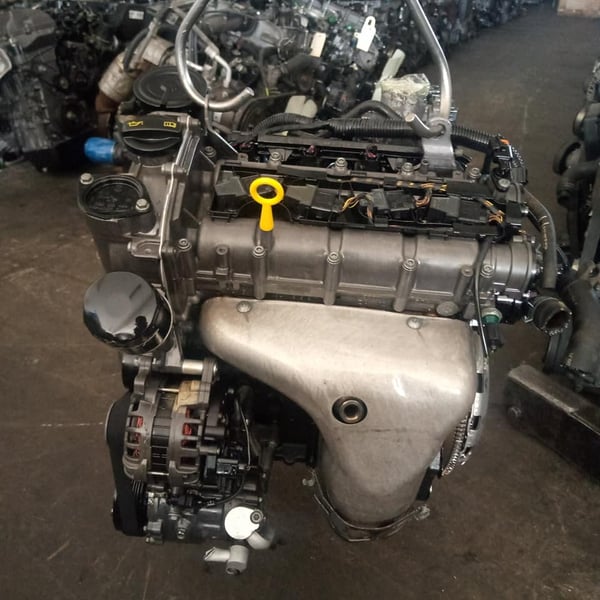Guarantee peak efficiency with a properly functioning clp engine.
Guarantee peak efficiency with a properly functioning clp engine.
Blog Article
Just How a Clp Engine Can Improve Performance in Different Industries
The arrival of CLP engines marks a considerable change in functional efficiency across different industries, driven by their ability to enhance gas intake and minimize downtime. As organizations progressively focus on sustainability along with performance, the function of CLP engines comes to be also extra crucial.
Review of CLP Engines
CLP engines, or Continual Fluid Propellant engines, represent a significant development in propulsion innovation, particularly for space applications. These engines make use of a constant feed system that permits the sustained expulsion of propellant, bring about boosted effectiveness and performance contrasted to conventional strong or hybrid propulsion systems. By keeping a continuous flow of fluid propellant, CLP engines can achieve extra exact drive control, which is important for navigating spacecraft in various goal situations.
The style of CLP engines integrates advanced products and ingenious gas administration systems. clp engine. This results in decreased weight and boosted reliability, essential factors for long-duration area objectives. The constant procedure reduces the threat of combustion instability, a typical obstacle in standard rocket engines.

Advantages in Production
The manufacturing of Continuous Liquid Propellant (CLP) engines presents several notable advantages that enhance both efficiency and cost-effectiveness. Among the key advantages is the structured manufacturing process, which decreases the complexity associated with typical propulsion systems. By making use of fluid propellant, producers can achieve greater precision in engine performance, causing enhanced energy outcome and lowered waste.
Additionally, CLP engines assist in a higher level of modularity, enabling less complicated combination into different production lines. This adaptability can significantly decrease lead times and boost general operational versatility. Making use of CLP innovation additionally often tends to reduce the need for considerable maintenance due to less moving parts, which translates right into decreased downtime and functional expenses.

Applications in Logistics
Leveraging Continuous Liquid Propellant (CLP) engines in logistics provides considerable advantages in operational effectiveness and dependability. These engines provide a durable remedy for numerous transportation needs, enabling the smooth motion of goods across substantial ranges. The integral layout of CLP engines permits for regular power result, which equates right into smoother and much more foreseeable transport routines.
One of the essential applications of CLP engines in logistics is in heavy-duty products transportation, where they can drive both ground and airborne lorries. Their capability to preserve high Web Site performance under varying lots conditions guarantees that delivery timelines are fulfilled, therefore boosting client satisfaction. In addition, CLP engines can be integrated right into automated logistics systems, facilitating real-time monitoring and enhancing route preparation.
Additionally, the durability of CLP engines lowers upkeep downtime, allowing logistics companies to optimize their operational capabilities. This is specifically advantageous in warehousing procedures, where effectiveness in handling and transferring goods is critical. As logistics proceeds to develop, the assimilation of CLP engines represents a forward-thinking approach that not just enhances performance yet additionally supports the industry's growing needs anonymous for dependability and speed.
Impact on Power Efficiency
Exactly How do Continuous Liquid Propellant (CLP) engines improve power effectiveness in transportation? CLP engines make use of a constant circulation of liquid fuel, maximizing combustion processes and keeping a steady drive outcome. This style decreases power losses connected with traditional burning engines, where gas distribution can vary and cause inadequacies.
The constant operation of CLP engines permits a more effective thermal cycle, leading to greater particular impulse contrasted to standard engines. clp engine. This converts to decreased fuel usage for the very same quantity of work done, considerably decreasing operational costs across different transport fields, including aviation and maritime industries
Additionally, the capacity of CLP engines her response to maintain optimal performance under varying load conditions decreases the requirement for regular acceleration and deceleration, further improving fuel effectiveness. Enhanced energy efficiency not only adds to cost savings but additionally brings about decrease greenhouse gas exhausts, aligning with international sustainability goals.
Future Trends and Innovations
Arising innovations in Continuous Liquid Propellant (CLP) engine modern technology promise to revolutionize the landscape of transportation performance and sustainability. As industries pivot toward greener alternatives, CLP engines stand at the forefront, integrating cutting-edge materials and design methods that boost efficiency while decreasing ecological impact.
Among one of the most appealing trends is the adoption of crossbreed systems that integrate CLP engines with sustainable energy resources. This synergy can maximize gas usage and decrease emissions, straightening with worldwide sustainability objectives. In addition, advancements in computational liquid dynamics (CFD) are helping with the design of even more aerodynamically effective engines, leading to lowered drag and enhanced gas performance.
Additionally, the development of smart surveillance systems is established to enhance functional efficiencies. These systems utilize information analytics and IoT modern technology to maximize engine performance in real-time, ensuring that the engines run within their most effective criteria.
As study continues to check out alternate propellant formulations-- such as biofuels and synthetic fuels-- the future of CLP engines looks promising. By using these advancements, sectors can not just boost their effectiveness but likewise contribute substantially to a cleaner, a lot more lasting future in transportation.
Final Thought
In final thought, CLP engines represent a substantial advancement in efficiency across multiple industries. The integration of advanced products and less moving components reduces maintenance requirements, while alignment with sustainability goals placements CLP engines as a pivotal modern technology for the future.
Report this page